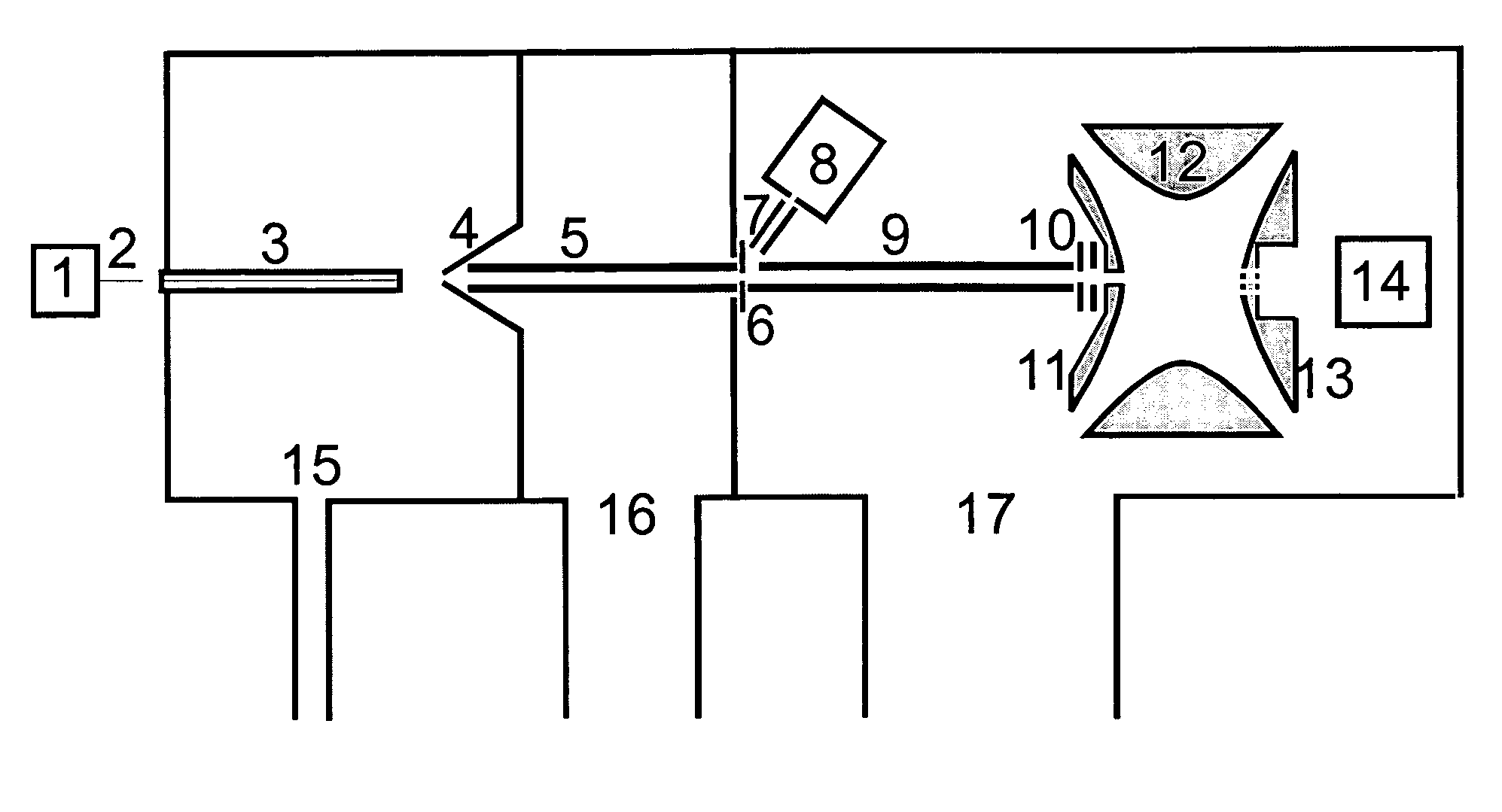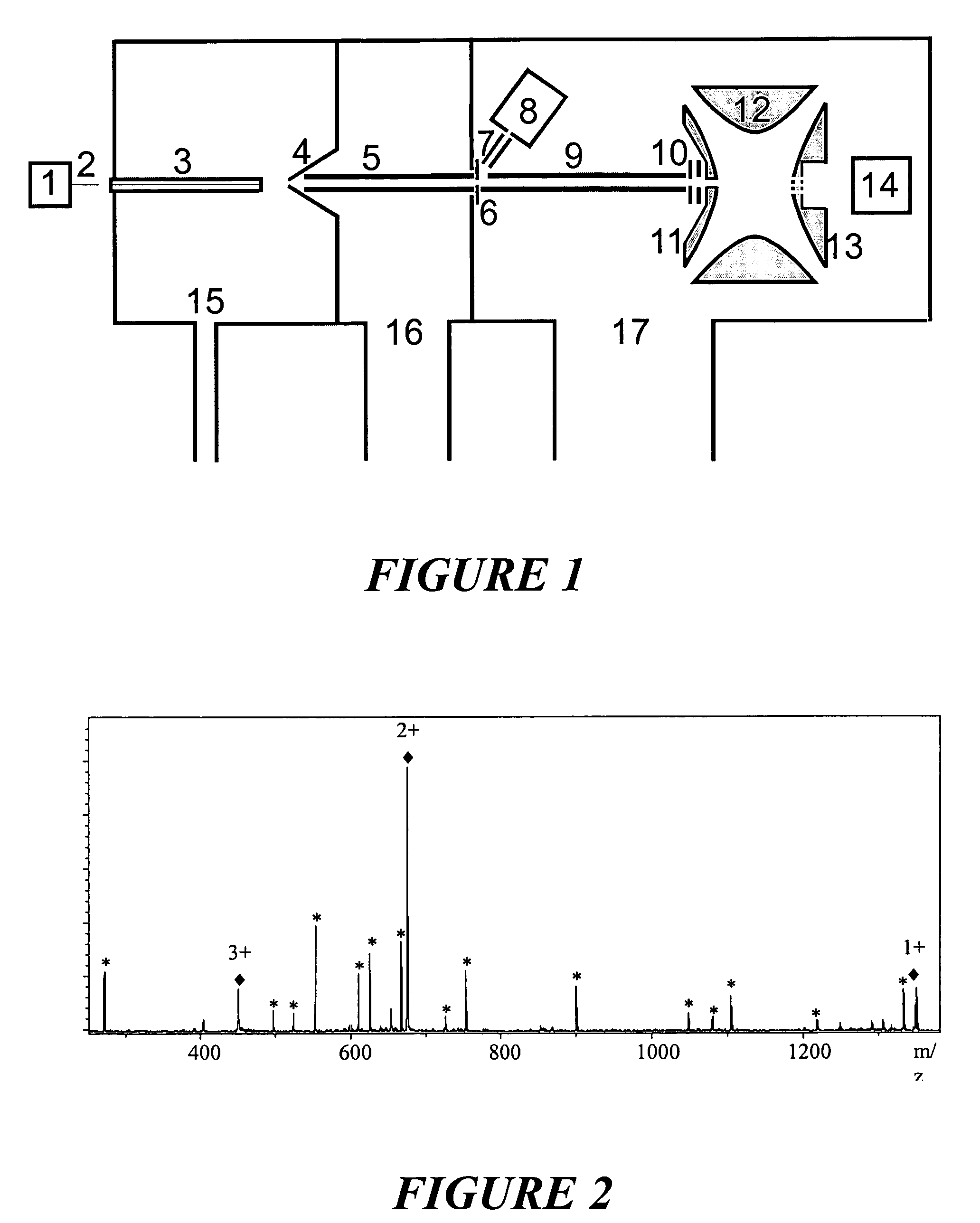Ion fragmentation by electron transfer in ion traps
a technology of electron transfer and ion trap, which is applied in the field of large molecular analyte ions fragmentation method and instrument, can solve the problems of lack of success in such reactions and may not be tru
- Summary
- Abstract
- Description
- Claims
- Application Information
AI Technical Summary
Benefits of technology
Problems solved by technology
Method used
Image
Examples
Embodiment Construction
[0028]A favorable embodiment of an ion trap mass spectrometer according to this invention and for carrying out a method according to the invention is shown schematically in FIG. 1. Here, an electrospray ion source (1) with a spray capillary (2) outside the mass spectrometer is used to ionize biomolecules. It will be assumed here that a mixture of digest peptides of a relatively large protein is to be analyzed. The ions are guided in the usual way via an inlet capillary (3) and a skimmer (4), with the ion guides (5) and (9), through the pressure stages (15), (16), (17) to the 3D ion trap with end cap electrodes (11 and 13) and ring electrode (12), where they are captured in the usual way. The ion guides (5) and (9) comprise parallel rod pairs, across which the phases of an RF voltage are alternately applied. They can take the form of a quadrupole, hexapole or octopole rod system.
[0029]A first mass spectrum, obtained by resonant excitation of the ions with mass-selective ejection and ...
PUM
 Login to View More
Login to View More Abstract
Description
Claims
Application Information
 Login to View More
Login to View More - R&D
- Intellectual Property
- Life Sciences
- Materials
- Tech Scout
- Unparalleled Data Quality
- Higher Quality Content
- 60% Fewer Hallucinations
Browse by: Latest US Patents, China's latest patents, Technical Efficacy Thesaurus, Application Domain, Technology Topic, Popular Technical Reports.
© 2025 PatSnap. All rights reserved.Legal|Privacy policy|Modern Slavery Act Transparency Statement|Sitemap|About US| Contact US: help@patsnap.com


